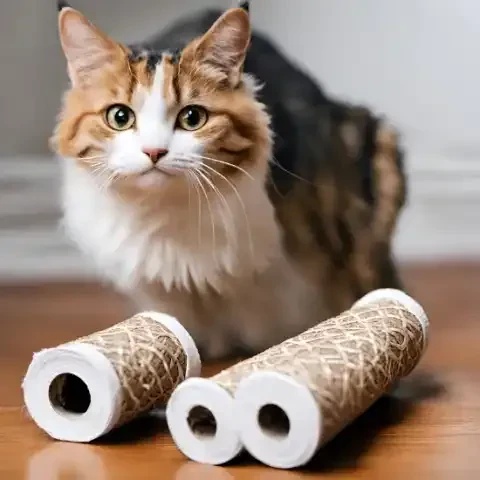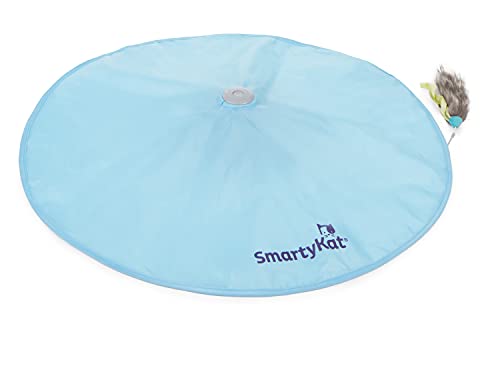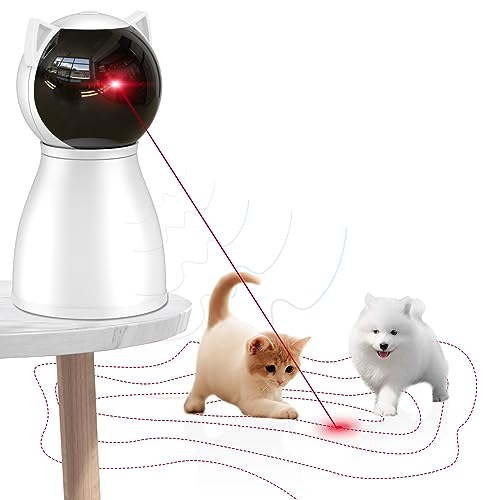Introduction to DIY Cat Toys
Cats are not just adorable companions; they're also playful and curious creatures. Play serves a crucial role in their physical and mental well-being, helping them to stay active, relieve stress, and express natural behaviors like hunting and exploring. However, buying toys for your feline friend can quickly add up in cost, and sometimes, store-bought toys may not capture your cat's interest as much as you'd hope.
This is where do-it-yourself (DIY) cat toys come in. DIY cat toys offer a cost-effective and engaging alternative for cat owners, allowing you to create fun and stimulating playthings using simple household items. Not only does making your own cat toys save you money, but it also provides an opportunity to bond with your cat through crafting and playtime.
In this article, we're excited to share eight easy-to-make DIY cat toy ideas that cater to various interests and energy levels of cats. Whether your cat loves to chase, pounce, or simply bat at toys, there's something here for every feline friend. Before we dive into the projects, let's first explore the importance of understanding your cat's play preferences to ensure you're creating toys that truly engage and entertain them.
Understanding Your Cat's Play Preferences
Cats have a diverse range of play behaviors, each serving a specific purpose in satisfying their natural instincts and keeping them mentally and physically stimulated. Understanding these behaviors is key to creating DIY toys that truly capture your cat's interest.
Firstly, cats exhibit a variety of hunting behaviors during play, including stalking, pouncing, and batting. Stalking involves stealthily approaching prey, often accompanied by low crouching and focused attention. Pouncing occurs when a cat suddenly springs forward to catch or bat at a target, mimicking the final stage of a hunt. Batting involves swatting at objects with their paws, simulating the capture of prey.
Observing your cat's play preferences is crucial for tailoring DIY toy choices accordingly. Pay attention to which types of toys your cat gravitates towards and how they interact with them. Some cats may prefer toys that mimic small prey, such as feather wands or laser pointers, while others may enjoy toys that encourage chasing or batting, like crinkle balls or dangling toys.
To identify your cat's favorite types of toys, observe their behavior and reactions during playtime. Notice if they show more interest in toys that move quickly or unpredictably, or if they prefer toys that make noise or have a texture they can sink their claws into. Experiment with different toy designs and observe which ones elicit the most enthusiastic responses from your cat.
By understanding your cat's play preferences, you can create DIY toys that cater to their specific interests, providing hours of entertainment and enrichment. Now that we've explored how to tailor DIY toys to your cat's preferences, let's delve into important safety considerations to keep in mind when crafting homemade playthings for your feline friend.
Safety Considerations for DIY Cat Toys
Ensuring the safety of DIY cat toys is essential to protect your feline friend from potential hazards. Here are some crucial safety considerations to keep in mind when creating homemade toys:
Use Pet-Safe Materials: When crafting DIY cat toys, it's vital to use materials that are safe for your cat to play with. Avoid materials that could pose choking hazards or contain toxic substances. Opt for pet-safe materials commonly found at home, such as cardboard, fabric scraps, and non-toxic paints. Ensure any adhesives or glues used are also pet-safe and non-toxic.
Safe Materials List: Here are some safe materials commonly found at home that you can use to create DIY cat toys:
Cardboard: Perfect for making puzzle toys, scratching pads, or hiding spots.
Fabric scraps: Ideal for sewing simple toys or stuffing into homemade plush toys.
Non-toxic paints: Use these to decorate cardboard or wooden toys, but ensure they are safe for pets.
Paper bags: Great for crinkly toys or hiding spots for your cat to explore.
Empty toilet paper rolls: Can be used to create ball tracks or puzzle toys.
Select Appropriate Sizes and Shapes: When designing DIY cat toys, consider the size and shape of the toy to minimize the risk of ingestion or injury. Choose materials that are too large to be swallowed whole, and avoid small parts or decorations that could come loose and pose a choking hazard. Opt for smooth edges and sturdy construction to prevent splinters or sharp edges that could cause injury.
Avoid Strings and Small Objects: Be cautious when using strings, ribbons, or small objects in DIY cat toys, as these can pose choking hazards or cause intestinal blockages if swallowed. If you do use strings or ribbons, ensure they are securely attached to the toy and supervise your cat during play to prevent accidents.
By prioritizing safety and using pet-safe materials, you can create DIY cat toys that provide hours of entertainment without compromising your cat's well-being. Remember to inspect toys regularly for signs of wear and tear, and discard any damaged toys to prevent accidents. With careful consideration and creativity, DIY cat toys can be both fun and safe for your furry friend.
DIY Feather Wand Toy
Creating a feather wand toy for your cat is a simple and enjoyable DIY project that can provide hours of interactive play. Here's a step-by-step guide to making your own feather wand toy using common household items:
Materials Needed:
A lightweight stick or dowel (approximately 12-18 inches long)
String or thin rope (about 2-3 feet in length)
Feathers (either store-bought feathers or feathers from a craft store)
Instructions:
Begin by tying one end of the string securely around one end of the stick or dowel. Make sure the knot is tight to prevent the string from coming loose during play.
Take the feathers and attach them to the other end of the string. You can either tie the feathers directly onto the string or use a small piece of tape to secure them in place.
Once the feathers are attached, trim any excess string to ensure it's the appropriate length for your cat to play with.
Give the feather wand toy a gentle shake to test its durability and ensure that the feathers are securely attached.
Tips for Engaging Your Cat:
To engage your cat in interactive play with the feather wand toy, mimic the movements of prey by slowly dragging the feathers along the ground or through the air.
Encourage your cat to pounce and chase the feathers by moving the wand in quick, erratic motions. This mimics the unpredictable movements of prey and can stimulate your cat's natural hunting instincts.
Allow your cat to catch and "capture" the feathers occasionally to keep the play session rewarding and satisfying.
Variations to Keep Play Exciting:
Vary the speed and direction of the feather wand to keep your cat engaged and challenged. Try moving the wand slowly at first, then gradually increase the speed to keep your cat on their toes.
Experiment with different feather colors and textures to see which ones capture your cat's interest the most. Some cats may prefer brightly colored feathers, while others may be drawn to feathers with soft or fluffy textures.
Introduce additional elements to the feather wand toy, such as bells or crinkly materials, to add sensory stimulation and make the play experience even more exciting for your cat.
By following these steps and incorporating these tips, you can create a DIY feather wand toy that provides hours of entertainment and exercise for your cat while stimulating their natural hunting instincts. Enjoy watching your furry friend pounce, chase, and play to their heart's content!
Homemade Cardboard Puzzle Toy
A homemade cardboard puzzle toy is an excellent way to provide mental stimulation and entertainment for your cat while encouraging problem-solving skills. Here's how you can create a simple yet engaging puzzle toy using cardboard boxes or tubes and treats:
Materials Needed:
Cardboard box or tube (such as an empty tissue box or paper towel roll)
Scissors or box cutter
Cat treats or kibble
Instructions:
Start by selecting a cardboard box or tube to use as the base of your puzzle toy. If using a box, you may want to cut off the top flaps to create an open-ended structure.
Use scissors or a box cutter to cut several small holes or openings in the cardboard box or tube. These openings should be large enough for your cat to reach inside but not so large that the treats fall out too easily.
Place a few treats or pieces of kibble inside the box or tube, ensuring they are distributed evenly throughout.
Close the openings with flaps of cardboard or tape to create a challenge for your cat to access the treats. You can vary the difficulty by adjusting the size and number of openings or by folding the flaps in different ways.
Explanation of Benefits:
The homemade cardboard puzzle toy stimulates your cat's problem-solving skills by presenting a challenge that requires them to use their senses and cognitive abilities to access the treats hidden inside. As your cat interacts with the toy, they must use their paws and claws to manipulate the openings and figure out how to extract the treats, providing mental enrichment and satisfying their natural curiosity.
Customization Ideas:
Adjust the difficulty level of the puzzle toy by changing the size and shape of the openings. For beginners, start with larger openings that are easy to access, and gradually decrease the size of the openings as your cat becomes more skilled.
Experiment with different types of treats or kibble to keep the puzzle toy exciting and rewarding for your cat. You can use small pieces of cooked chicken, freeze-dried treats, or even catnip-infused treats to add variety to the game.
Add additional layers of complexity to the puzzle toy by stacking multiple boxes or tubes together or by incorporating other materials, such as cardboard tubes or PVC pipes, to create interconnected chambers and tunnels.
By following these instructions and customizing the puzzle toy to match your cat's skill level and preferences, you can provide hours of mental stimulation and entertainment for your feline friend. Enjoy watching your cat use their problem-solving skills to unlock the tasty rewards hidden inside the homemade puzzle toy!
DIY Catnip Sock Toy
Creating a catnip-filled sock toy is a simple and enjoyable DIY project that can provide your cat with hours of playful entertainment. Here's how you can make one using just a clean sock and dried catnip:
Materials Needed:
Clean sock (preferably made of a durable material like cotton)
Dried catnip (readily available at pet stores or online)
Instructions:
Begin by filling the clean sock with dried catnip. You can use as much catnip as you like, depending on how potent you want the toy to be. Be sure to leave enough room at the top of the sock to tie it closed securely.
Once the sock is filled with catnip, securely tie the open end of the sock closed with a tight knot. Double knotting is recommended to ensure the catnip stays contained.
Trim any excess material from the knotted end of the sock to prevent your cat from chewing on it or unraveling the knot during play.
Explanation of Benefits:
Catnip, a member of the mint family, contains a compound called nepetalactone that triggers a euphoric response in many cats. When cats come into contact with catnip, whether by sniffing, licking, or rubbing against it, they may exhibit playful behaviors such as rolling, rubbing, or darting around. By filling a sock with dried catnip, you create a toy that not only stimulates your cat's senses but also enhances their enjoyment of playtime.
Suggestions for Refreshing the Catnip Scent:
Over time, the scent of catnip may fade, diminishing your cat's interest in the toy. To keep the toy enticing and engaging for your cat, consider periodically refreshing the catnip scent. You can do this by:
Adding fresh dried catnip to the sock: Simply open the knot, add a small amount of fresh catnip, and re-tie the sock closed securely.
Massaging the sock: Gently knead and massage the sock between your fingers to release the oils and scent of the catnip, revitalizing its allure to your cat.
Spraying the sock with catnip spray: Catnip sprays are available commercially and can be sprayed onto the sock to rejuvenate the scent and appeal of the toy.
By following these guidelines and periodically refreshing the catnip scent, you can ensure that your DIY catnip sock toy remains a favorite plaything for your cat, providing them with endless hours of entertainment and enjoyment.
Toilet Paper Roll Ball Track
Constructing a ball track using empty toilet paper rolls is a fantastic DIY project that offers both physical stimulation and mental enrichment for your cat. Here's how to create one using simple materials:
Materials Needed:
Empty toilet paper rolls (quantity depends on the desired size of the ball track)
A shallow box or tray (such as a cardboard box lid or baking tray)
Small balls or toys that fit inside the toilet paper rolls (ping pong balls, jingle balls, or small cat toys work well)
Instructions:
Begin by gathering your empty toilet paper rolls and arranging them inside the shallow box or tray. You can arrange them in any configuration you like, such as in a straight line, a circle, or a zigzag pattern.
Once you've arranged the toilet paper rolls, secure them in place by gluing them to the bottom of the box or tray. Ensure they are spaced evenly and firmly attached to prevent them from shifting during play.
Once the glue has dried, place small balls or toys inside the toilet paper rolls. These will serve as the "prey" for your cat to chase and bat around the track.
Invite your cat to explore the ball track and watch as they engage in playful swatting, batting, and chasing as they try to capture the moving objects inside the rolls.
Benefits of the Ball Track Toy:
The ball track toy provides numerous benefits for your cat's physical and mental well-being, including:
Physical exercise: Chasing and swatting at the moving objects inside the toilet paper rolls provides your cat with much-needed physical activity, helping to keep them healthy and fit.
Mental stimulation: Figuring out how to capture the objects inside the rolls stimulates your cat's problem-solving skills and cognitive abilities, providing mental enrichment and preventing boredom.
Mimicking hunting behavior: The ball track toy allows your cat to engage in natural hunting behaviors, such as stalking, pouncing, and chasing, which helps satisfy their instinctual needs.
Tips for Enhancing the Toy's Sensory Appeal:
To make the ball track toy even more engaging for your cat, consider incorporating additional sensory elements such as:
Bells: Attaching small bells to the balls or toys inside the rolls adds an auditory element that captures your cat's attention and enhances the play experience.
Crinkly paper: Adding crinkly paper or tissue paper to the bottom of the box or tray provides an intriguing texture and sound that stimulates your cat's senses and encourages exploration.
Catnip-infused toys: Sprinkling catnip inside the toilet paper rolls or on the balls/toys can increase your cat's interest in the toy and make playtime even more rewarding and enjoyable.
By following these instructions and incorporating sensory enhancements, you can create a DIY ball track toy that offers endless entertainment and enrichment for your cat, keeping them physically and mentally engaged for hours on end.
Enjoying DIY Cat Toys Together
As a cat owner, engaging in play with your feline companion is not just about having fun—it's also a crucial aspect of maintaining their overall well-being and strengthening your bond. Here's why enjoying DIY cat toys together is essential:
Recap of Play's Importance:
Play is an integral part of a cat's life, serving as a means of physical exercise, mental stimulation, and social interaction. Regular play sessions help prevent obesity, alleviate stress, and satisfy your cat's natural instincts, contributing to their overall health and happiness. Moreover, engaging in play with your cat fosters a deeper connection and strengthens the bond between you and your furry friend.
Encouragement to Experiment:
With the wide variety of DIY cat toy ideas provided in this article, we encourage you to experiment and explore different options to find what best suits your cat's preferences and interests. Observe your cat's reactions during playtime and take note of which toys they enjoy the most. Every cat is unique, so don't be afraid to try new ideas and variations to keep playtime exciting and engaging for both you and your cat.
Invitation to Share Experiences:
We invite you to share your own DIY cat toy creations and experiences with other cat owners in the comments section below or on social media platforms. By exchanging ideas and insights, we can collectively enrich the lives of our feline companions and inspire others to get creative with DIY cat toys. Whether you've crafted a new toy design, discovered a clever way to refresh the scent of a catnip toy, or simply witnessed your cat's joy during playtime, your contributions can help fellow cat owners enhance their cats' lives and strengthen their bonds with them.
In conclusion, embracing DIY cat toys as a means of play not only benefits your cat's physical and mental well-being but also deepens the special bond you share. So, let's get crafting, playing, and sharing the joy of DIY cat toys together!







